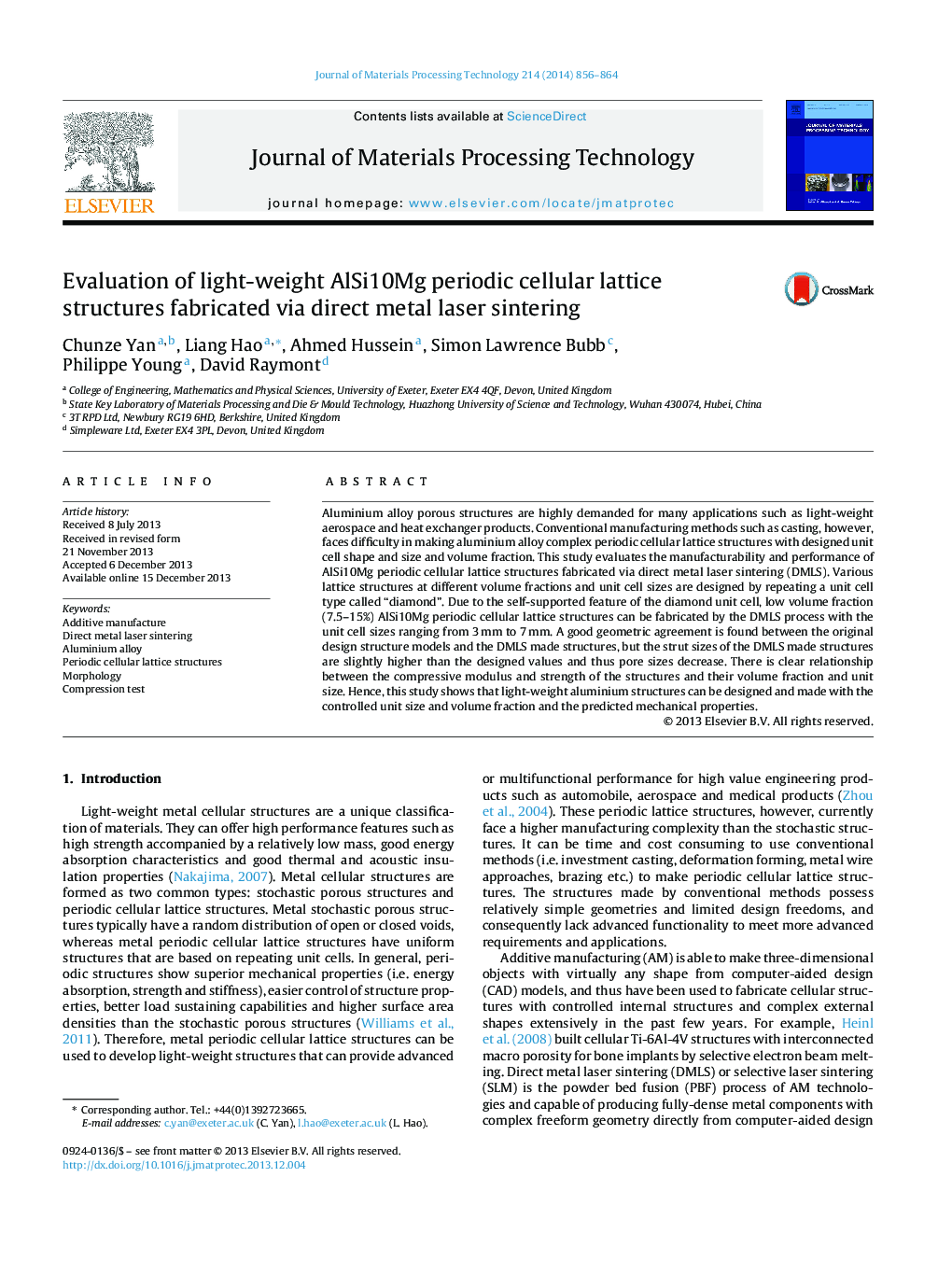| کد مقاله | کد نشریه | سال انتشار | مقاله انگلیسی | نسخه تمام متن |
|---|---|---|---|---|
| 798064 | 903201 | 2014 | 9 صفحه PDF | دانلود رایگان |

• AlSi10Mg cellular lattice structures are made by direct metal laser sintering.
• A unique cell type called “diamond” is designed to construct lattice structures.
• Curved cell surface as a self-supported feature avoids support structures.
• Strength and modulus increase with increasing the volume fraction.
• Strength and modulus decrease with the increase in the cell size.
Aluminium alloy porous structures are highly demanded for many applications such as light-weight aerospace and heat exchanger products. Conventional manufacturing methods such as casting, however, faces difficulty in making aluminium alloy complex periodic cellular lattice structures with designed unit cell shape and size and volume fraction. This study evaluates the manufacturability and performance of AlSi10Mg periodic cellular lattice structures fabricated via direct metal laser sintering (DMLS). Various lattice structures at different volume fractions and unit cell sizes are designed by repeating a unit cell type called “diamond”. Due to the self-supported feature of the diamond unit cell, low volume fraction (7.5–15%) AlSi10Mg periodic cellular lattice structures can be fabricated by the DMLS process with the unit cell sizes ranging from 3 mm to 7 mm. A good geometric agreement is found between the original design structure models and the DMLS made structures, but the strut sizes of the DMLS made structures are slightly higher than the designed values and thus pore sizes decrease. There is clear relationship between the compressive modulus and strength of the structures and their volume fraction and unit size. Hence, this study shows that light-weight aluminium structures can be designed and made with the controlled unit size and volume fraction and the predicted mechanical properties.
Journal: Journal of Materials Processing Technology - Volume 214, Issue 4, April 2014, Pages 856–864